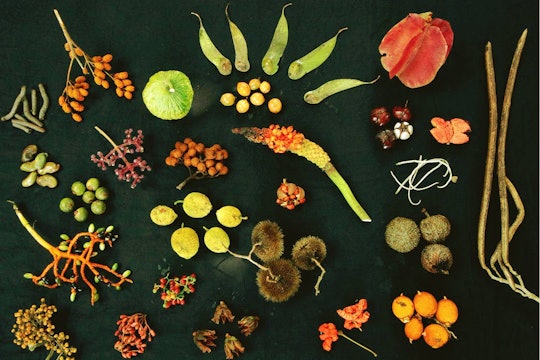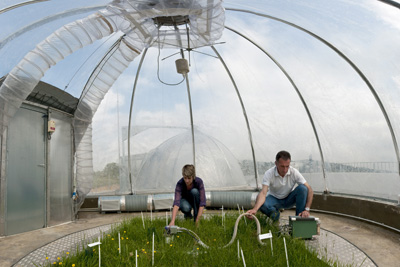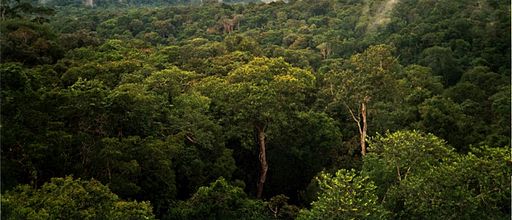
Biodiversity doesn't just arise out of healthy ecosystems. It helps create them
Why researchers are starting to think differently about biodiversity
The human race is currently conducting the largest-scale biodiversity removal experiment to date. By stripping tropical and temperate forests of trees, fishing out the tastiest animals from our oceans and rivers, and pumping carbon dioxide into the atmosphere at unprecedented rates, we are driving species – both popular, charismatic animals like the polar bear, as well as less beloved but potentially crucial plants, insects, and microorganisms – toward extinction at a rapid clip.
We have no idea how severe the impacts of this unintended experiment will be, but at this point all predictions suggest that species loss will have serious negative impacts on the world's ecosystems, with corresponding, potentially catastrophic, impacts on human well-being.
In an ideal world, we would protect the natural world because it has intrinsic value and we feel a moral responsibility to maintain the exquisite diversity of life on our planet. Unfortunately, that is only a convincing argument to people who already believe in the intrinsic value of nature. We need look no further than the recent news that just this month our current administration rejected petitions to protect 25 species, including Alaska's Pacific walrus, under the Endangered Species Act for evidence of this. Today's reality is that we need more ways to communicate the value of biodiversity to diverse audiences in ways that people can relate to.
Tail wagging the dog?
Researchers have spent the past two decades trying to do so. Around 1994, a new field of ecology research, now known as "biodiversity-ecosystem functioning," began to develop out of the realization that scientists didn't know how biodiversity loss would affect humans or the ecosystem processes that we depend on. The central tenet of this research was unorthodox: what if, instead of assuming biodiversity was a result of environmental conditions, as studies traditionally did, they treated it as something that could actually regulate the way ecosystems worked?
They reasoned that this approach would shed some light on how much an ecosystem's functions are controlled by its own flora and fauna.

An ecotron chamber, which was used to test biodiversity's effects on ecosystems
One of the first large experiments designed to test this theory was done by Shahid Naeem and colleagues (then of the NERC Centre for Population Biology in the UK) in 1994. They used a system of 14 model ecosystems, each contained in their own individual chamber, to test the effects of varying numbers of species of plants and animals on ecosystem processes like water retention. Dozens of other studies followed, including theoretical work by Michel Loreau and two long-term grassland studies at the University of Minnesota's Cedar Creek Ecosystem Science Reserve led by David Tilman. They collectively turned biodiversity-ecosystem functioning into an important sub-field of ecology: in the past 20 years, ecology researchers have carried out over 500 experiments testing the relationship between biodiversity and ecosystem functioning.
They have found strong evidence that having a higher number of species in a given environment does affect ecosystem functioning. In fact, across these hundreds of experiments, which generally compared the productivity of ecosystems with many species to that of ecosystems with few, the multi-species systems were about 50 percent more productive. The basic explanation for this is that diverse systems prosper because they contain a variety of species, each with their own characteristics and survival strategies, that fit together like puzzle pieces to maximize the resources available to them.
Until recently, other scientists have been reluctant to recognize the theorized relationship between biodiversity and ecosystem functioning, as the findings have not been validated in un-manipulated settings – meaning, out in nature. Critics argued that these experiments used only small subsets of species, that they were conducted in very controlled (and thus unnatural) conditions, and that they only examined effects on ecosystems over relatively short time periods. A public back-and-forth played out in commentaries and responses published in forums like the quarterly Bulletin of the Ecological Society of America in the early 2000s, pushing ecologists to design better experiments that addressed these flaws.
Real-world evidence
Now, J. Emmett Duffy from the Smithsonian Institute and his colleagues from the University of Michigan have corroborated the effects of biodiversity on ecosystem functioning "in the wild" in a study published in September. They did this with an impressive meta-analysis of 67 studies and over 623,000 individual sampling locations, most in aquatic, grassland, and forest habitats.
They found that, across the board, there was a strong positive association between the number of species in an ecosystem and it's observed productivity (the growth rate of all living things in the system) – and that the effect of biodiversity alone is just as strong as the effect of environmental factors. That is, the number of species living in an area was just as important to its health as the greater environmental conditions. In a forest ecosystem, for example, this means that the diversity of trees in the system is as important in determining the forest's productivity as light or water availability are. This is a pretty stunning result when you consider the fact that without either water or light, a forest would quickly disappear.

The Manaus rainforest in Brazil
If diverse ecosystems are more productive than their species-poor equivalents, protecting biodiversity leads to more efficient nutrient and water cycling, more carbon dioxide sequestered in seagrass and trees, and more connected food webs to maintain the top predators and large herbivores that have come to symbolize wild nature to many people. More diverse ecosystems that contain a variety of species with different characteristics are also more resilient to change than systems with just a few species.
Protecting biodiversity is a major investment in our future because it provides us with the goods and services that we need to survive. Without plants and animals, we would have to engineer solutions to challenges like water filtration and pollination that existing species provide to us for free. And finally, maintaining species-rich ecosystems means having an insurance policy against ecological changes. Diversity will not prevent all of the predicted negative effects of climate change and habitat loss, but protecting as many species as we can provides a buffer that may well help us adapt and mitigate the worst of it.
The evidence is now clear. The next challenge is to get it integrated into public policy, and we can't afford to wait another two decades.


I appreciate that the author level-headedly accepts that some people need to be convinced to protect the natural world – and that she proceeds with a clear summary of how researchers tackled the challenge of studying how biodiversity affects an ecosystem's function. I also love the re-framing done by the "biodiversity-ecosystem functioning" subfield of ecology research, a great example how a small tweak to initial assumptions can reveal fresh insights, concretize experimental goals, and inspire new research approaches. This article is also a great example of communicating the value of biodiversity in clear and evocative language, which I hope will help convince anyone still on the fence about protecting the natural world.